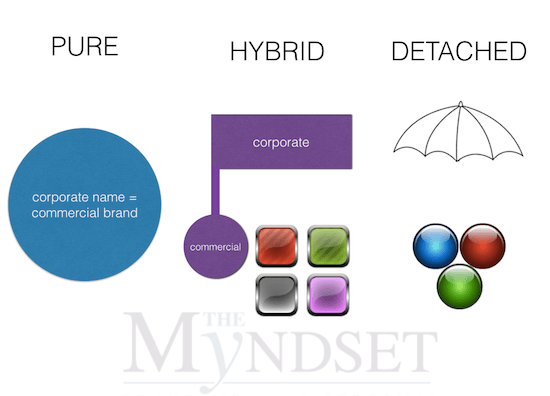There is corporate strategy, then there is brand strategy. There are corporate communications and corporate shareholders; then there are employees and customers. There are corporate values, policies and procedures and then there is innovation, digital and customer centricity… There are corporate positions and responsibilities. And then, there are people. How are they living the brand?
If a corporation is a governing body whose guiding purpose is to return value to shareholders, there is a subtle balance to be found in enabling, engaging and energizing the individuals that make up the workforce of the company. In a world where the people on the frontline (salespeople, customer service, store personnel, social media community managers…) are fostering and driving customer engagement, the onus is on the company leadership to make their corporate values — as expressed by behavior and language — come to life for the employees.
The organizing principle
The way a corporation is organized has a tremendous effect on the liberty and cogency of any corporate mission and values. [♺!] When dissecting the types of large publicly traded corporations, there are basically three options:
- Pure: The corporate brand is also the main commercial brand (e.g. Apple, Starbucks, DELL)
- Hybrid: The corporate brand has one or more commercially traded brands of the same name as well as other brand names (e.g. L’Oreal, LVMH, PepsiCo)
- Detached: The corporate umbrella brand operates without a commercially traded brand of the same name (e.g. Procter & Gamble, Kering, Unilever)
In PURE #1, when the corporate name is the commercial name, the big advantage is that the corporate values are, ipso facto, also the brand values. This does not mean that the values are necessarily lived by the employees. However, the effort of alignment and activation is simplified. In the HYBRID case (#2), the corporate image is heavily linked to the success of the commercial brands carrying its name. The challenge can become in how to enable and empower the “other” brands. When a corporation owns a portfolio of brands (DETACHED #3), none of which shares the corporate name, the brands are detached and have, by definition, a greater degree of leeway.
Employees, not brands, engage
It is my strong conviction that customer engagement happens after employee engagement.[♺!] Employees should be the first to live the brand. Thus, finding and retaining talent that is aligned with your corporate mission and de facto values is one of the keys to cultivating long-term traction both of the employees and of the customers. It makes little sense to try to be customer centric, when the employees don’t believe the organization in the first place.[♺!] In consideration of the corporate structures above and the de facto governance, companies and their brands have more or less freedom. In any event, it must be understood that the structure has a material impact on how to make the brand values come alive.
What do you think? Please feel free to drop in your comments!












